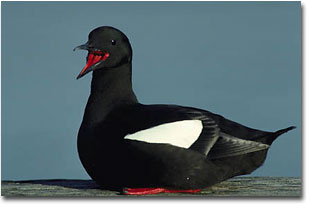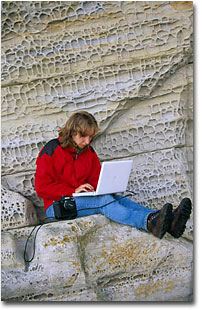|
|
 The Trouble with Digital Capture
Text and photography Copyright Niall Benvie Here is a cautionary tale. As Bill Clinton worked the crowds after his second election, he was momentarily embraced by a young woman. Whir-r-r went the motordrives, but only one of those was driving film. All the digital shooters, doing on-the-spot edits wiped the image - Monica Lewinsky had still to achieve public notoriety. When the story broke a few months later, Dirck Halstead, the dinosaur that he was, went to his contact sheets and took this picture to market. The word is that he did rather well out of it...
What this tale doesn't tell, however, is how fundamental digital capture has become to news photographers who need to be able to get images to picture desks in minutes rather than hours. And as the output quality from digital cameras has increased to the extent that some scanning backs for medium format cameras can provide superior results to film, so other branches of the medium have forsaken film. Many of these applications, however, are studio based where a dry environment and mains electricity make it easy to accommodate all the supporting technology: the computers, monitors and file writing/ storage devices. Trying to replicate this in the field, with a powerful laptop computer is expensive, cumbersome, climatically vulnerable and heavily battery dependent. It is simply a much more complex, technologically top-heavy way of working. So outdoor photographers need to ignore the hype about digital capture and think clearly about why they would want to give up the high quality and convenience of film. Are the benefits claimed for digital capture really worth the investment, especially when high quality film scanners are now available for somewhat less money than a digital camera? What does digital capture really have to offer? Clearly, there is a major advantage in terms of speed of seeing the image. The advantages of this immediacy are, I think, over-stated for the sort of work that most of us do. The preview on the camera's LCD gives no proper indication of exposure accuracy as it changes depending on the angle at which it is viewed. How do you tell if the image is sharp? The LCD monitor image, even when magnified, gives only a rough approximation. So you may need to wait until the image is up on a proper monitor in the studio before you can tell. My equipment supplier has reported a sharp rise in the sales of independent optics as professionals using digital cameras no longer see the benefit of using the manufacturer's own, more expensive lenses. A transparency, or a negative, provides an impartial record of sharpness, something which is much harder to assess with a digital image.
There is a more general issue over working methods in the field. These vary from photographer to photographer, of course, but I doubt if I am alone in wanting to separate the experience of being close to the animal and taking pictures from the editing and review process. I try to keep office and field time as separate as possible, for the benefit of both. Most of us have experienced the phenomenon of pictures "growing on us" over a period of days and weeks as we look at them. This possibility wouldn't exist if we had to make a quick field edit. You may argue that storage devices are available which allow you to store many high resolution images which can be reviewed which it suits you better. That's as maybe, but we have one already that is much, much cheaper and quicker to use; film. A 36 exposure roll of slide film contains the equivalent of roughly 2Gb of information. This assumes that each slide is scanned at around 4000 dpi, at which point pixels become smaller than film grain and each file is in the order of 60 Mb. A direct comparison cannot be made with digital capture here because the scanning process has a degrading effect and you can get away with a digital capture of about half that size to get equivalent output quality. Nevertheless, if you want to shoot even a fraction of the quantity of the film you currently shoot at a good location, you are going to need lots and lots of storage space. I can check a strip of processed film for exposure and sharpness in about 2 minutes. Getting 1 Gigabyte of information up on screen takes somewhat longer. Perhaps my biggest concern has to do with future accessibility of our images. If we will never look at them again after a few years, this isn't relevant, but I for one still sell pictures (I'm ashamed to admit) taken more than 15 years ago. If you got into digital imaging in its very early days and archived all you pictures on Syquest disks, then dread the day your drive dies as they don't make them any more. CD's are ubiquitous at the moment and it's currently unimaginable that the drives to read them won't always be around. But all of us with a computer more than 3 or 4 years old know to our cost that obsolescence is built in. Backward compatibility has never been a chief concern of the industry and I think we should be wary of committing our precious images to ephemeral storage media without the backup of film. Short of losing our sight, we will always be able just to look at it. Finally, let's not forget that digital capture, and all its peripherals, remains beyond the means of many photographers. Prices have fallen considerably and may continue to do so, especially if manufacturers decide that they want to discourage film use. But switching from film is always going to involve a major on-going commitment to acquiring and up-grading a whole lot more equipment than we need for making slides. The time, I believe, is not yet right to make the switch. Niall Benvie - NPN 018 Comments on this article? Send them to the editor. |
|
|

